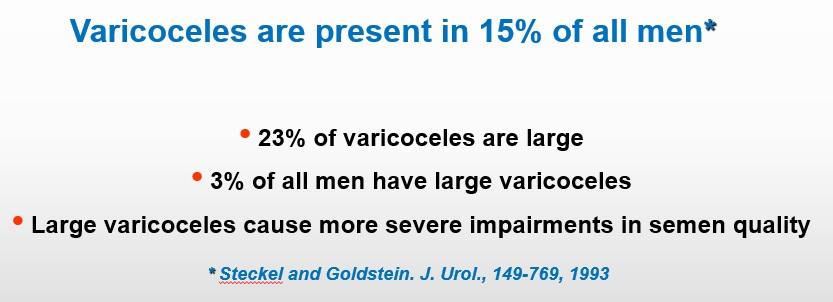
Due to anatomic differences, varicoceles are much more common on the left side. The incidence of bilaterality is anywhere from 15 to 50% but isolated right varicoceles are rare. The left internal spermatic (testicular) vein empties into the left renal (kidney) vein. It is 8 to 10cm longer than the right internal spermatic vein, which drains into the inferior vena cava. This is believed to result in increased hydrostatic pressure that is transmitted down the vein to the scrotal pampiniform plexus, causing dilation and tortuosity of these vessels. Elevated pressure in the left internal spermatic vein may also result from compression of the left renal vein between the aorta and the superior mesenteric artery, a phenomenon known as the "nutcracker effect." Varicoceles arise due to reflux of venous blood into the testicular pampiniform plexus as a result of absent or incompetent valves within the internal spermatic vein. A report by Braedel et al. on over 650 consecutive men with varicoceles revealed that 73% had absent internal spermatic venous valves on venography. Varicoceles generally become clinically manifest at the time of puberty.

